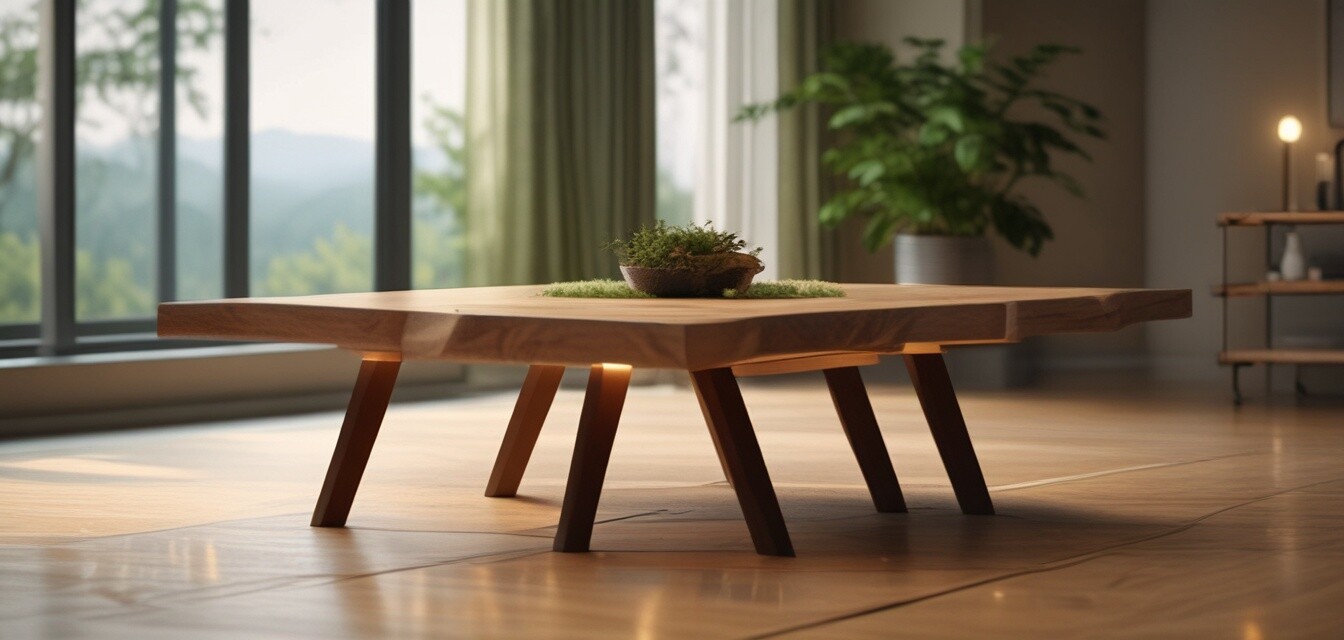
The Future of Smart Wooden Furniture
Key Takeaways
- Integration of technology enhances the functionality of wooden furniture.
- Smart features cater to sustainability and lifestyle needs.
- Trends reflect a blend of nature and modern design.
- Wood and technology can coexist harmoniously.
- Future designs will prioritize user experience and eco-friendly practices.
In the ever-evolving world of home design, one of the rising trends is smart furniture, especially those crafted from natural materials like wood. As technology intertwines with artistry, the future of wooden furniture is being shaped in remarkable ways. It not only enhances our living spaces but also redefines functionality while celebrating the natural elements of wood.
The Integration of Technology into Wooden Furniture
The integration of technology into wooden furniture is not merely a trend; it's a necessity in our modern lifestyles. With the increasing demand for multifunctional furniture, manufacturers are stepping up to incorporate smart technologies into their designs. Here are some ways technology enhances wooden furniture:
| Technology Feature | Functionality Provided |
|---|---|
| Wireless Charging | Allows devices to charge without cables, maintaining a clean aesthetic. |
| Smart Lighting | Adjustable lighting options can be controlled via apps for ambiance. |
| Built-in Speakers | Enhances the audio experience directly from furniture, perfect for entertainment. |
| Temperature Control | Adjusts furniture temperature for comfort, especially in chairs and seats. |
Smart Features Catering to Sustainability and Lifestyle Needs
As more consumers turn to eco-friendly products, the emphasis on sustainable practices in the design of smart wooden furniture grows. Here are some sustainable features that are becoming a standard:
- Eco-friendly materials: Focus on responsibly sourced wood that minimizes environmental impact.
- Energy-efficient designs: Utilization of low-energy components in smart features.
- Longevity of use: Designs are meant to last, reducing the need for frequent replacements.
Natural materials paired with sustainable technology symbolize harmony between nature and modern living. This modern approach allows consumers to engage more thoughtfully with their environment while enjoying contemporary comforts.
Trends in Smart Wooden Furniture Design
The design journey of wooden furniture is evolving to include smart features while maintaining aesthetic integrity. Some notable trends include:
- Minimalist designs: Simple lines accentuate the natural beauty of wood.
- Multi-functionality: Pieces that serve several purposes, like a dining table that converts into a workspace.
- Smart storage solutions: Integrated compartments that help organize clutter effectively.
These trends reflect a changing consumer perspective; they desire goods that not only look good but also enhance their daily lives.
The Future: Wood and Technology Coexisting Harmoniously
The innovative designers of today recognize that the future of wooden furniture goes beyond functionality. The goal is a seamless blend of eco-friendliness, modern technology, and artisanal craftsmanship. This shift towards creating integrated solutions leads us to consider:
- Will technology replace traditional craftsmanship?
- How will consumer preferences evolve with these innovations?
- What new materials and technologies will emerge in future designs?
As we embrace these questions, it's essential to explore ongoing changes; keeping track of the latest news and trends will ensure you stay informed about the developments within the world of wooden furniture. For further insights on this topic, check our News and Trends section.
Conclusion
The marriage of technology and wooden furniture signifies an exciting chapter in design. As manufacturers incorporate smarter features, they echo a desire for functionality that honors the environment. The future of smart wooden furniture is bright, with endless possibilities.
Pros
- Enhanced functionality with smart features.
- Eco-friendly practices promoting sustainability.
- Visually appealing designs that respect natural aesthetics.
- Adaptability to diverse living requirements.
Cons
- Potential higher costs for integrating technology.
- Dependency on power sources for smart features.
- Complexity of repairs for tech-integrated furniture.
Beginner's Section: Considerations for Choosing Smart Wooden Furniture
- Assess the size and layout of your space.
- Consider your lifestyle needs and preferences.
- Research the materials for eco-friendliness and durability.
- Evaluate the technology features and their usability.
- Prioritize designs that fit both aesthetic and functional requirements.
For more information on selecting the best natural wood products, visit our Wood Finishing Products page.